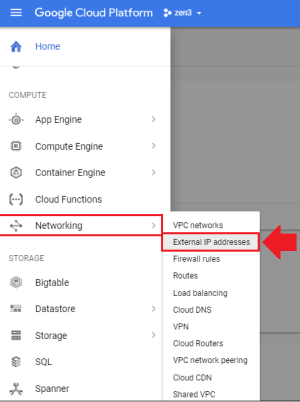Once we deploy a website on Google Cloud Platform, the next step is to reserve Google Cloud static IP address.
The majority of the technical issues by Google Cloud Platform users occur because of user's failure to reserve a static IP address for their website.
Here at Ibmi Media, as part of our Server Management Services, we regularly help our Customers to perform related Google Cloud queries.
In this context, we shall look into how to Reserve Google Cloud Static IP Address.
How to Reserve Google Cloud Static IP Address ?
Generally, there will be a website deployed on Google Cloud Platform Compute Engine.
When it comes to reserver there are 2 methods:
- Reserve an Existing IP Address
- Reserve a New IP Address
1. Reserve an Existing IP Address
From the Google Cloud Platform dashboard, we navigate to Networking >> External IP addresses.
Suppose we have a configured the website already. Then we click the down arrow under the Type column and select Static for the External IP address that connects to our instance.
2. Reserve a New IP Address
From the Google Cloud Platform dashboard, we navigate to Networking >> External IP addresses.
Suppose we need to reserve a new static IP address for our instance. Then instead of using the existing one, we click the RESERVE STATIC ADDRESS button.
In addition, if we choose this option, we ensure the IP address matches the IP address in our website's DNS records.
We configure the settings, make sure to attach the static IP address to the correct instance, then click the Reserve button.
How to Troubleshoot Google Cloud Static IP Address ?
Depending on Google Cloud configuration, External IP Addresses may locate either under VPC Network > External IP addresses or Networking > External IP Addresses.
It is possible for us to not find the option Networking > External IP addresses. In such a case, we make sure to use VPC Network > External IP addresses.
By reserving a Static IP Address, we prevent our site from breaking after server outages or restarts.
[Couldn't reserve Static IP? We'd be happy to assist you. ]
Conclusion
This article covers how to reserve static IP for our customers. In Compute Engine, each VM instance can have multiple network interfaces. Each interface can have both internal and external IP addresses. Forwarding rules can have external IP addresses for external load balancing or internal addresses for internal load balancing.
If a virtual machine (VM) instance requires a fixed external IP address that does not change, you can obtain a static external IP address for that instance by using one of the following options:
- Reserve a new static external IP address and then assign the address to a new VM instance.
- Promote an existing ephemeral external IP address to become a static external IP address.
This article covers how to reserve static IP for our customers. In Compute Engine, each VM instance can have multiple network interfaces. Each interface can have both internal and external IP addresses. Forwarding rules can have external IP addresses for external load balancing or internal addresses for internal load balancing.
If a virtual machine (VM) instance requires a fixed external IP address that does not change, you can obtain a static external IP address for that instance by using one of the following options:
- Reserve a new static external IP address and then assign the address to a new VM instance.
- Promote an existing ephemeral external IP address to become a static external IP address.












